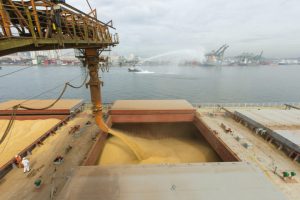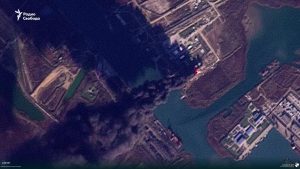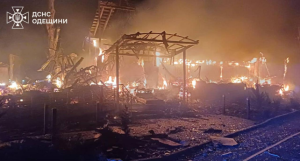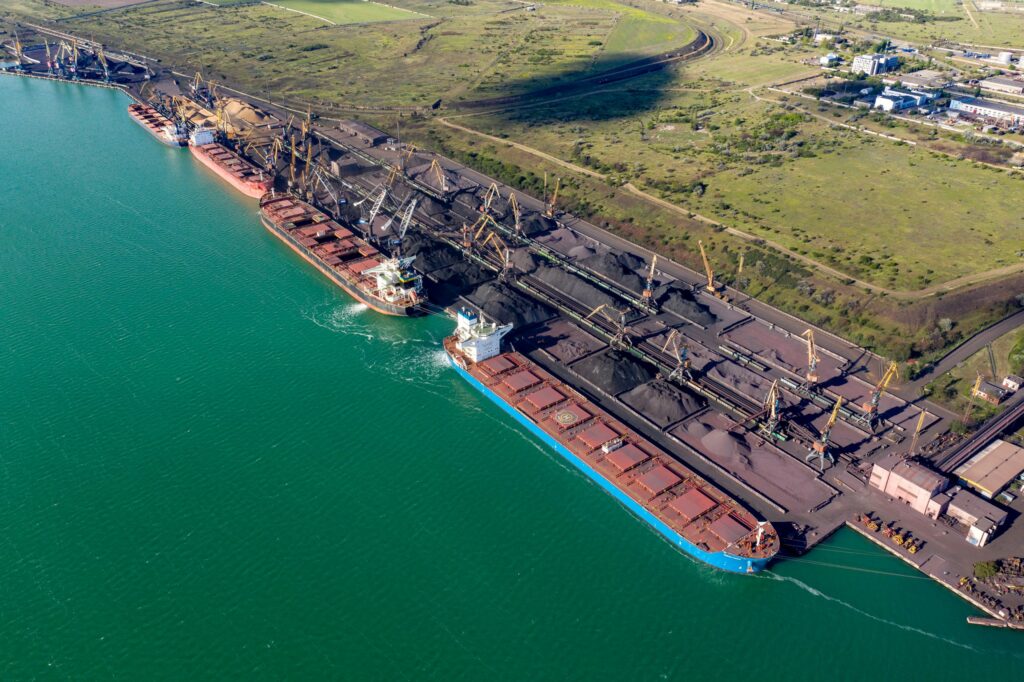Unemployment, theft of grain and microwaves: what is happening in the occupied Ukrainian ports?
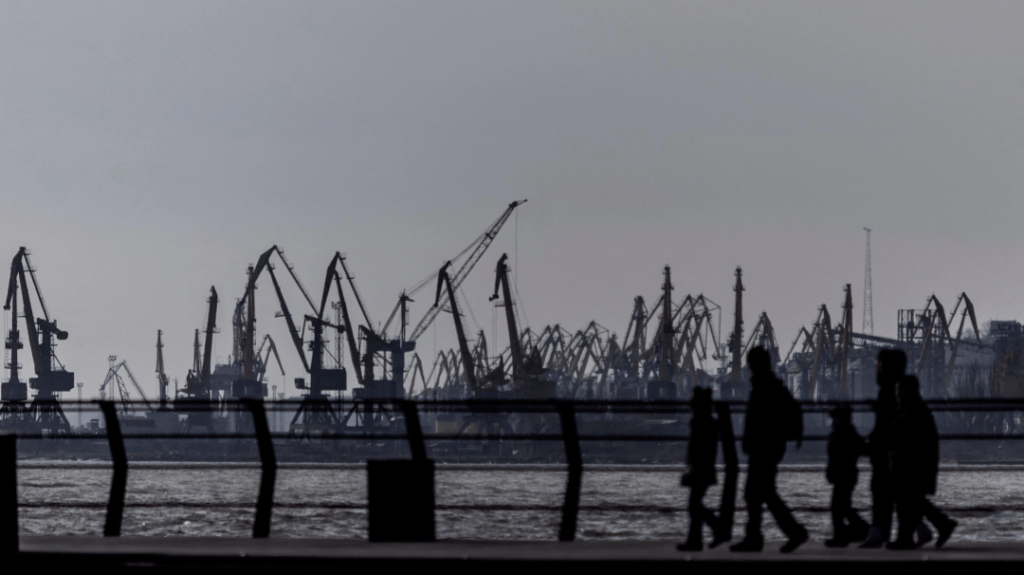
Kherson, Mariupol and Berdyansk are three ports occupied by Russian troops. The Russians use Ukrainian enterprises to obtain military equipment from Russia. Also, the occupiers steal grain from farmers or large agricultural enterprises and send it through captured ports to third countries.
USM found out what is happening now in each of the three occupied ports.
Kherson
The port of Kherson is located on the high right bank of the Dnipro River. The number of cargo berths in the port is 10, the depth near the wall of the berths is up to 8.25 m. There are 8 terminals in the port. The port is able to handle more than 4 million tons of dry cargo per year, as well as 550 thousand tons of bulk cargo. Grain and grain processing products, as well as metal products, are mainly transshipped in the port.
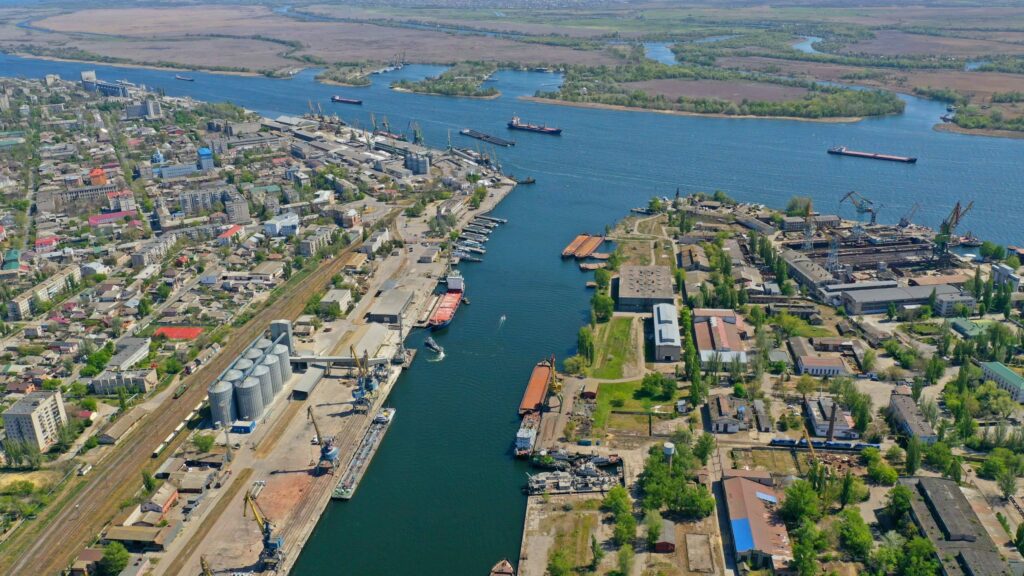
The Russians occupied Kherson on March 1. At the same time, the invaders entered the port and disabled all surveillance cameras on the territory of the enterprise. It was reported that the port workers were released and the port fleet was withdrawn.
Andrii Kharitonov was appointed the head of the port. Previously, he worked as the head of the watercraft division of Kherson Shipbuilding Plant, which is part of the Smart Maritime Group of oligarch Vadym Novinsky. Currently, new port employees are being sought in Kherson by word of mouth.
Then the Russians and collaborators fed the public with news that in the captured port “infrastructure is being restored, repairs are being carried out, preparations are underway to resume full operation.“
Meanwhile, the occupiers took grain from farmers (or bought it for nothing) in the Kherson region and took it to the Crimea. From there, the stolen products were sent (and are sent) to Turkish ports, forging documents about the origin of the cargo.
In mid-June, the “military-civilian administration” of the Kherson region announced that the port had allegedly resumed operations and was preparing to begin transshipment of cargo. However, as of August, the port is still not working: the invaders are hindered by Ukraine-controlled Ochakov, which blocks their exit from the Dnipro-Buzka estuary.
The port of Ochakov is located near the mouth of the Southern Bug River, at the entrance to the Dnipro Bay, which leads to the port of Kherson. The draft at the port allows receiving, except for, river vessels or vessels of the river-sea type. Moreover, there are territories and ports of Ukraine upstream and downstream from Ochakov. Therefore, even in the occupiers’ fantasies about capturing Ochakov, there is no logic, and there is no logic in their actions.
In addition, it is currently extremely difficult for the Russians to plan any actions to restore transshipment in the captured ports, especially in Kherson and the region. The Kherson region may become the first to be de-occupied by Ukrainian troops, so the invaders are busy equipping defense positions. The “restoration” of the ports is progressing slowly, and the rare movements of stolen vessels on the Dnipro and statements about the quick start of work are aimed, rather, at the domestic Russian consumer.
Together with Kherson, the port of Skadovsk came under the temporary control of the Russians. The occupiers plan to restore it in order to export stolen grain (the current flights with grain from the annexed Crimea are probably not enough).
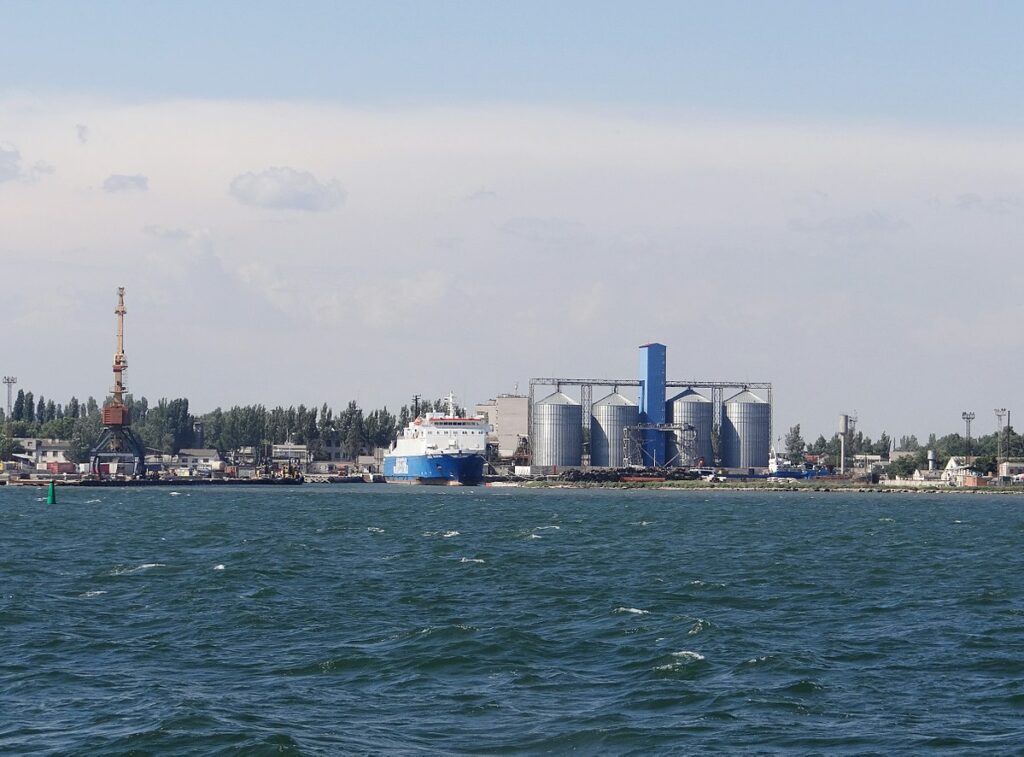
Grain is planned to be loaded onto ships in the fall, after “bringing the port to readiness.” The illegal “head of the military-civilian administration” in Skadovsk Serhiy Shvayko told the Russian mass media about this.
Skadovsk is located in the Kherson region, so the “success” of the occupiers in the Skadovsk port directly depends on the military situation in the southern direction. The USM will monitor the actions of the Russians and collaborators in this port as well.
We will remind, before the arrival of the occupiers, the Skadovsky seaport had been in stagnation for several years. In 2014, the company sharply lost 80% of its cargo turnover. At that time, despite the favorable geographical location and low tariffs, carriers did not risk cooperating with the port due to its dangerous proximity to the anti-terrorist operation zone (ATO).
The depth in the water area of the Skadovsky port does not exceed 10 m, which did not allow the reception of large vessels. For the gradual restoration of the port, it is necessary, at least, to carry out its dredging. The authorities of Ukraine planned to privatize the port in order to save the enterprise. It is not clear how the occupiers plan to reanimate the port, what cargoes they plan to transfer.
Тому загарбники знайшли Скадовському порту інше застосування: нині там розміщують військову техніку та звозять боєприпаси.
Therefore, the invaders found another use for the Skadovsky port: now military equipment is placed there and ammunition is transported there.
“The port is not working, no ships enter there. The Russian military is stationed on the territory of the port, and some of its own equipment is stationed, and it is now impossible to get into the port. All employees who worked there do not go to work,” explained the mayor of Skadovsk, Oleksandr Yakovlev, in a comment to Radio Svoboda.
In addition to Skadovsk, the Kherson region is home to the Khorly port and the Henichesk port, which was previously planned to be used by the Ukrainian military. It is not known whether the Russians currently use these ports.
Mariupol
A port on the coast of the Sea of Azov, one of the five largest ports in Ukraine. The passport depth of the water area of the port and the approach channel of the Coal Harbor are 9.75 m and 9.15 m. The port accepts vessels with a draft of up to 8 m and a length of up to 240 m. There are 18 berths in the port of Mariupol. SE Mariupol Sea Trade Port (MMTP) is the only port operator. The port handles grain, oil and metal products, as well as cars and trucks.
The throughput capacity of the Mariupol port is about 17 million tons per year. However, due to the war in Donbas, the construction of the Kerch bridge and unreasonable delays of ships, the port of Mariupol almost tripled the volume of cargo handling. The number of ship calls to Ukrainian ports on the Sea of Azov has more than doubled since 2014, which has affected economic indicators.
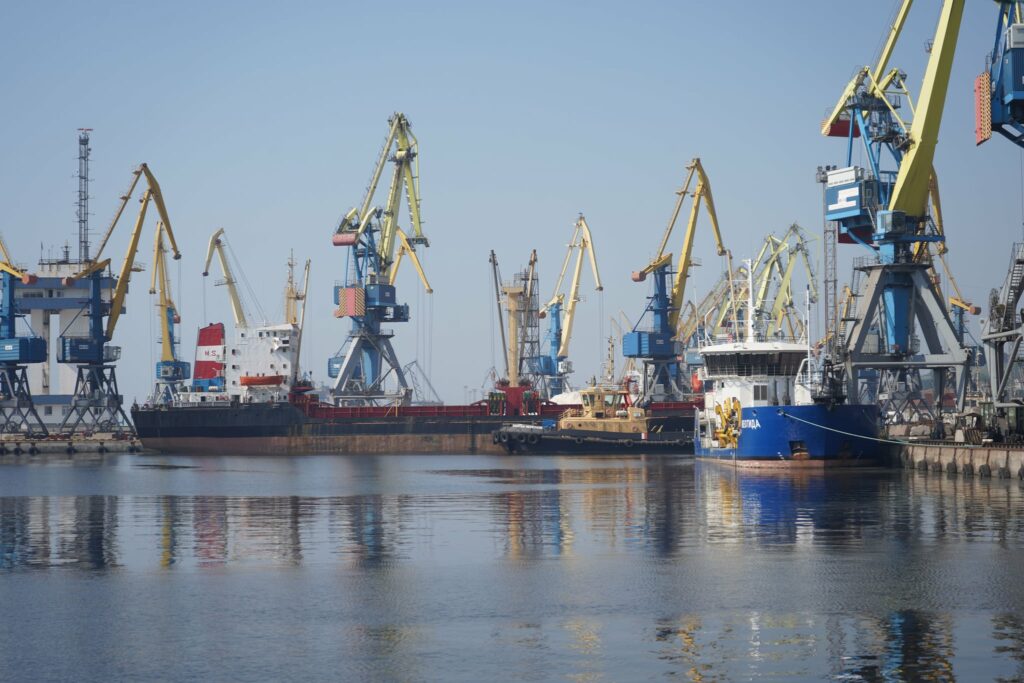
Mariupol has also been under blockade by Russian troops since March 1. The occupiers fired at ships in the port, and we are not talking only about the ships of the Ukrainian Navy. On April 8, the Russians fired at the icebreaker “Captain Bilousov”, which was carrying a civilian crew. As a result of the shelling, one person was killed and several others were injured.
On May 25, the Russian Ministry of Defense announced the completion of demining and “demilitarization” of the port of Mariupol, as well as the “launch” of the port’s operations.
Now from Mariupol looted goods are sent to Russian ports on the Sea of Azov. There, the cargo is sent either further to Russia or to third countries, under the guise of cargo of Russian origin.
In early July, the occupiers launched a towing crane in the Mariupol port to clear the shipping channel and water area. In addition, electricity was supplied to the Mariupol port, and the port cranes began to operate. At the same time, the residents of Mariupol remain without electricity supply – it is important for the occupiers to use the Ukrainian infrastructure for their own purposes, but not to “improve” the lives of ordinary citizens.
The Russians send rolled metal and grain from Mariupol according to an already developed scheme – through Syria. Such a channel was agreed upon recently, during a visit to Syria by Shablin, a curator from the State Duma of the Russian Federation, and representatives of the DNR.
Also, in July, five large buses with Russian military personnel arrived in Mariupol from the direction of Volnovakha-Donetsk. Buses arrived in Primorsky district. According to the adviser to the mayor of Mariupol, Petro Andryushchenko, such a rotation indicates the strengthening of security, first of all, in the port.
Later, the occupiers launched a diesel train with two reserved carriages from Mariupol-Volnovakha. Two anti-sabotage platforms were attached to the train. On the same tracks, the Russians are launching a passenger train that will go ahead of the freight train, essentially using the people of Mariupol as a human shield.
In July, it was possible to record the beginning of sea communication between Mariupol and Rostov-on-Don. Stolen Ukrainian rolled metal was taken from Mariupol by ship, and several ships and a tanker arrived at the occupied port from Rostov-on-Don. The ships were carrying military cargo and fuel to fill the warehouse in the port to Mariupol. The port of Mariupol was finally turned into a military transport hub.
Petro Andryushchenko urged residents of Mariupol from the Primorsky District to change their place of residence in case of an attack by the Ukrainian military.
Moscow does not forget about the main goal of the “special operation” — the theft of everything that Russian soldiers see in the temporarily occupied territories. That is why the Mariupol port is being prepared for transshipment of the grain of the stolen crop – they are trying to start the grain terminal, grain trucks from Donetsk are being launched to Mariupol.
So, the Russians launched the Lavrentiy ferry, which will run from Yeisk (Russian Federation) to Mariupol and back. But there will be no passengers on the ship – only military cargo. During one 4-hour flight, the ferry can transport, for example, 20 wagons of ammunition. In general, the ship can transport up to 700 tons of cargo.
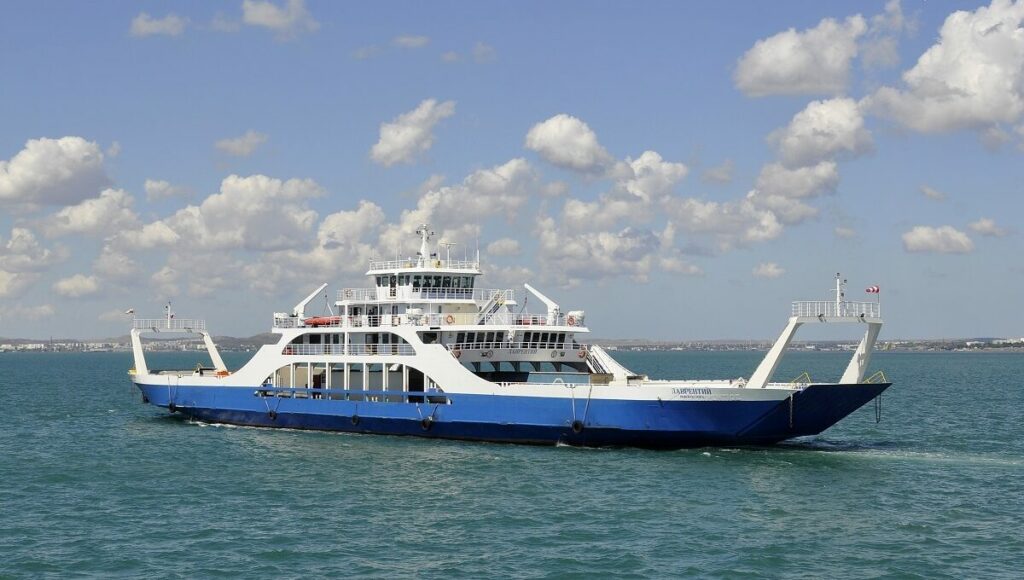
The ferry was launched by the group of companies “Oboronlogistika”, which works in the structure of the Military Construction Complex of the Ministry of Defense of the Russian Federation. Oboronlogistika announced its plans on its official website without hiding its intentions.
Also, the occupiers are currently clearing the railway track in Mariupol in order to quickly send trains from the port to Volnovakha. In addition, the Russians need a stable connection of the repair base at MMK named after Ilyich with the port.
A counteroffensive of the Armed Forces of Ukraine on Mariupol is inevitable. Considering the fact that the Russians are continuously “pumping” the port with weapons, the enterprise may suffer greatly during the “cleaning” of the occupiers. USM will talk about how the Mariupol port will be restored after the war in the next article.
Berdyansk
Also located on the coast of the Sea of Azov, it is the only sea transport hub of the Zaporizhzhia region. Technical and food oils are transshipped in the port. The throughput capacity of the port is 400,000 tons of bulk cargo per year. The port has 10 berths, the draft is 7.9 m. There are five terminals on the territory of the port.
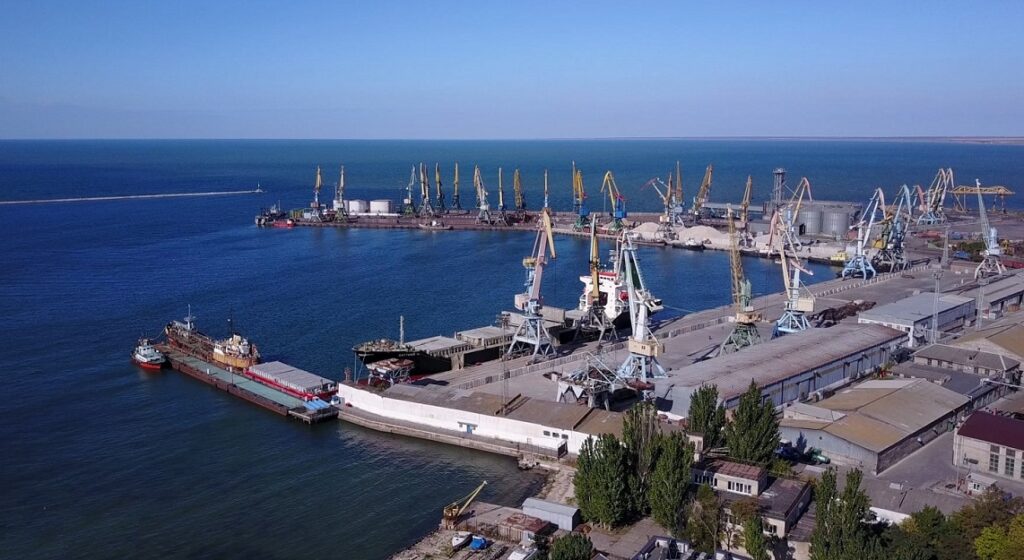
The occupiers began to fully manage Berdyansk on March 1. During the battles for the city, the Russian military attacked the Berdyansky sea trade port with missiles.
Then, as expected, the Russians started stealing: they stole the Korets tugboat of the Ukrainian Navy from the port. Also, five ships with Ukrainian grain were taken out of Berdyansk: the destination ports were indicated only for two dry cargoes, so it is not known where the grain went. The head of the Institute of Black Sea Strategic Studies Andrii Klymenko assumed that the occupiers released these vessels in order to free the berthing wall of the Berdyansk port for their logistical purposes.
Then the Russian military decided to create a military base in Berdyansk port. In particular, in March, the large amphibious assault ship “Orsk” entered the port with a load of armored personnel carriers on board. On March 24, the Armed Forces destroyed the “Orsk” and damaged two more Russian ships in Berdyansk.
In June, it became known that the captain of the Berdyansk seaport, Mykola Eremenko, voluntarily transferred to the service of the occupiers.
“Mykola Mykolayovych Eremenko, who held the post of captain of the Berdyansk seaport, voluntarily agreed to cooperate with the occupiers. Yeromenko, as a lover of all Soviet and communist topics, was very happy about the capture of Berdyansk, and now he is campaigning for cooperation with the Rashists of his former subordinates,” local mass media reported.
In July, the first ship with stolen grain – “Zhybek Zholy” – left Berdyansk port for Turkey. The “memorable” photo was published in Telegram by the head of the “temporary administration of the Zaporizhia region” Yevhen Balytskyi. However, Turkey later ignored the photos from the collaborators themselves and other evidence of grain theft from Ukrainian diplomats and journalists, and released the ship.
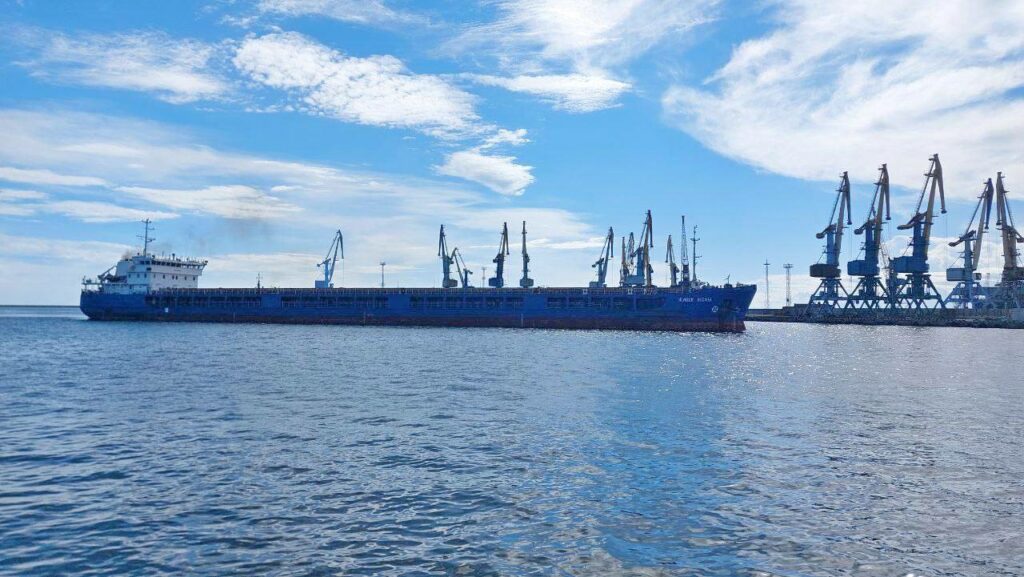
In order to export even more grain from Berdyansk and other cities of the Zaporizhia region, the occupiers organized the so-called “GUK” (State Unitary Company). It is controlled by the already mentioned Yevhen Balytskyi. Collaborators seized the port elevator of the “Nova Khortytsia” enterprise in Berdyansk, the loading complex of the “Asket Shipping” enterprise in the port of Berdyansk, the elevators of the enterprises “Kernel”, “Optimus” and other grain traders.
USM contacted Olga Saminina, director (in peacetime) of the Berdyansk port. She told us about the situation in the port of Berdyansk from the words of port workers.
Saminina maintains contact with the port workers – not those who went to work for the new “management”, but those who were left without a job. The main problem voiced is that the port workers were left without means of livelihood. The last salary payment was made at the end of March.
“People need to live and feed their families. I do not justify switching to work for Russian mercenaries, because many workers did it, taking into account their personal preferences, because they had a “very bad time under the Ukrainian authorities”, they were “undervalued and oppressed”, but there are also those who simply survive. “I have not heard from anyone about being forced to go to work, everything was at my own will and by agreement,” says Saminina.
According to her, the launch of the port by the occupiers seems unthinkable: “First of all, the occupiers dragged and removed everything they saw from the port — starting with spare parts, microwave ovens, tools, etc., and ending with just the working form of a docker.”
The director of the Berdyansk port notes: even before the full-scale invasion of Russia, the port was on the verge of a crisis, and now it is completely left with nothing.
“What cargo are they going to transport and to which countries? Most of the cranes do not work, we had to repair them during the spring-summer… The same with other mechanisms. Everything is very silly and incomprehensible, but for shooting stupid videos about the start of work of the Berdyansk port for Russian television, that is what is needed,” Saminina summed up.
Ukrainian ports are the result of many years of work of thousands of people. During the 30 years of Ukraine’s independence, ports stagnated or developed, depending on the management of enterprises and specialized state institutions. The port of Kherson was handed over to a concession, Berdyansk was planned to be privatized, and the port of Mariupol managed to become the main transshipment of Ukrainian metal products, despite a significant reduction in cargo traffic due to the war in Donbas.
The Russian occupiers “reset” all the results and plans of Ukrainian ports, which provided the lion’s share of the country’s economy. It is always easier to destroy than to build, and the Russians are professionals in the first. Creating something new is not their profile. Another USM concludes the material with the words that all hope is currently in the Armed Forces of Ukraine. Only after the liberation of the captured territories, a long recovery of the ports, new plans, strategies and results await us.

